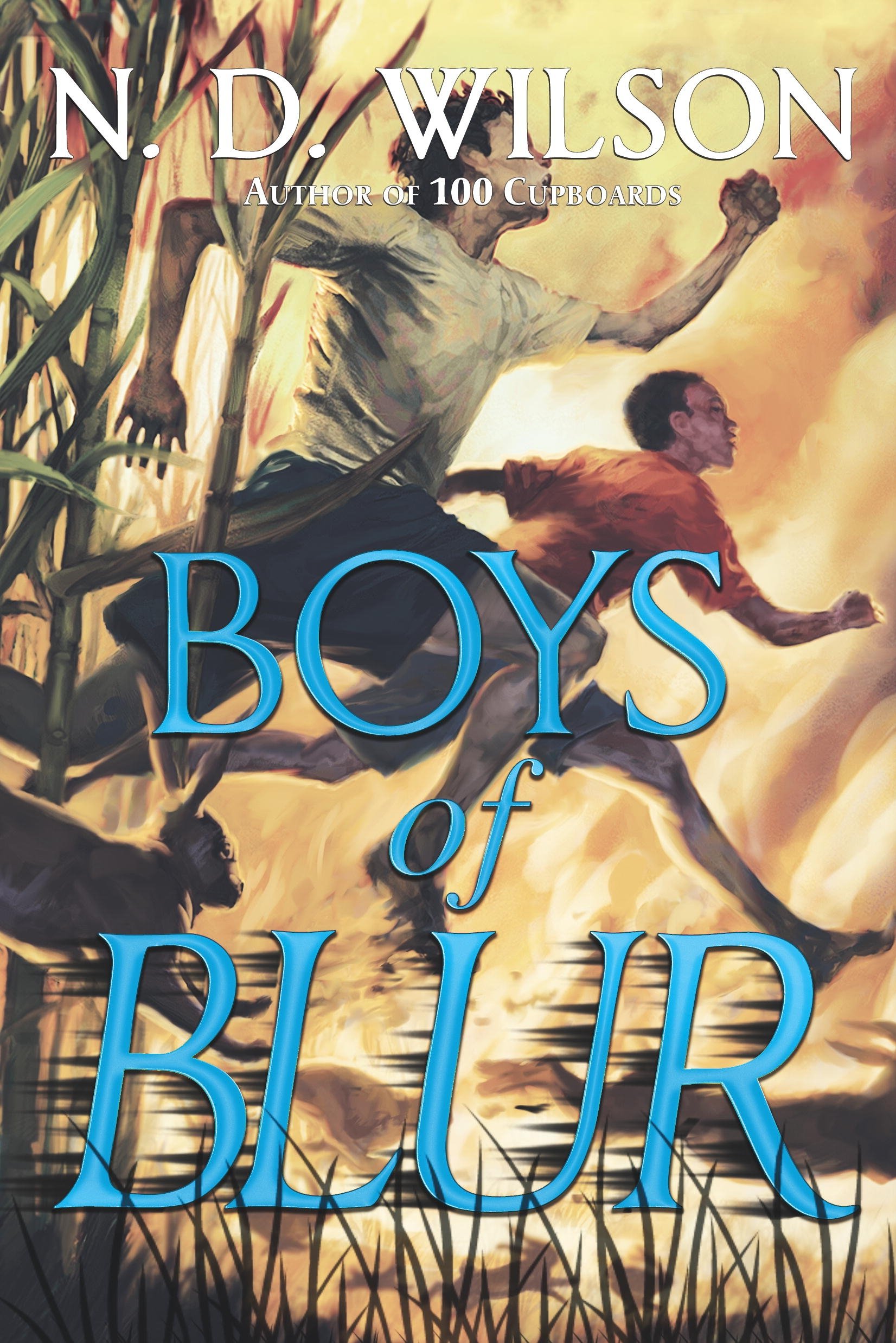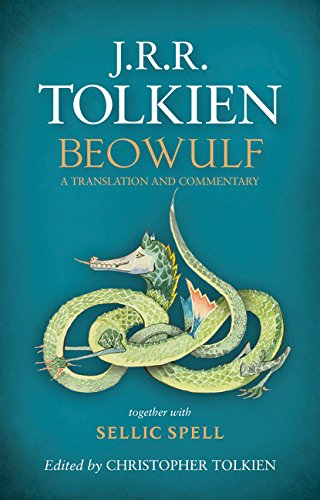When the sugarcane’s burning and the rabbits are running, look for the boys who are quicker than flame.
Crouch.
Stare through the smoke and let your eyes burn.
Don’t blink.
While cane leaves crackle and harvesters whir, while blades shatter armies of sugar-sweet sticks, watch for ghost in the smoke, for boys made of blur, fast as rabbits and faster.
Shall we run with them, you and I? Shall we dodge tractors and fire for small handfuls of fur? Will we grin behind shirt masks while caught rabbits kick in our hands?
Shoes are for the slow. Pull ‘em off. Tug up your socks. Shift side to side. Chase. But be quick. Very quick. Out here in the flats, when the sugarcane’s burning and the rabbits are running, there can only be quick. There’s quick, and there’s dead. – Boys Of Blur

In 2014, after the success of Leepike Ridge, the 100 Cupboards trilogy, and the three Ashtown Burials Books, N. D. Wilson published a phenomenal book that is a surprise favorite of mine. Over the last six months I have been meeting once a month with a dozen or so eight to fourteen-year-old readers for a Wilson book club. In all of those months this one remains the favorite of the boys and one of the top choices of the girls. I waited to read this one until I had completed his serial books because I thought this stand-alone book couldn’t possibly be as good as those others. I was wrong.
This exciting modern story captivates readers in the prologue and barely lets us take a breath before the last page. All of us in book club agreed that this is a book that has to be read aloud and fast. The prose leaps off the page like a rabbit running from sugarcane fire, and the reader finds himself wanting to chase along like the boys. Setting his characters in the Florida sugarcane flats during the harvest, Wilson makes it very clear that this story is going to be full of intense adventure, and no small amount of danger.

Like the ancient myths, Wilson’s books weave the ordinary with the fantastic in a such way that the reader feels as though anything is possible and believable. While they are about different characters, the books do mix and mingle a bit. In his first book, Leepike Ridge, the fantasy elements are practically non-existent. In the Cupboards books and the Burials books, the fantasy invades the “real” world. In the Cupboards books, for the most part, it is like Narnia in that the other world invites Henry to go there with very little action happening in our world. In the Burials books, things change. We see that our real world really has another world co-existing inside the one we see, but it is mostly hidden. In Blur, the intermingling of the two worlds becomes much more obvious to the normal character. In the Outlaws books, the other world has totally invaded our world. It’s a very interesting progression and gives readers a chance, if they read in publication order, to see more clearly how Wilson is setting up his own mythology.
Like most of his readers, Wilson’s characters are modern American boys (and a good number of girls) with a love of sports. In Henry, Kansas, the sport of choice is baseball. In Ashtown, Wisconsin, swimming is central to the storyline. In Taper, Florida “football and church… don’t cancel for nobody” (Boys Of Blur, p. 133). Grounding his characters in sports, Wilson is able to tell wild stories while keeping his characters quite normal.
‘Welcome to my heriot,’ Mrs. Wisdom said. ‘Complete with a Grendel‘s arm, as distasteful as it is. Once, when I was your little Molly’s age, courageous men and women laughed and feasted here. Now…’ she sighed. ‘You ever read Beowulf, love?’
Charlie stared at the arm’s painfully bent fingers, at the naked sinews jutting out of the shoulder. He shook his head.
‘Cotton probably has…’”

One of the things we learn in the Burials books is that all the mythology from the classics is, in Wilson’s world, not untrue. Maybe Wilson is playing with Chesterton’s idea from The Everlasting Man that all myths are true, or maybe he was just a kid raised on the classics who really wanted them to be real. But like his character Cotton, it is obvious that Wilson read those old books and is giving them new life in his own.

Boys of Blur is one of Wilson’s most exciting, most dangerous, and darkest books to date. In it, Grendel from Beowulf is plaguing Taper because the Mother was never properly killed. Like its classical inspiration, this one has a fair amount of violence in it. None of it is gratuitous or graphic, but all very much present.
It’s my opinion that this is one of his most creative works. I loved reading it aloud to my seven, nine and eleven-year-olds. I would not recommend it to every child that young, but for my children it was not a problem. The violence is necessary, the good guys are good, the bad guys are bad, and there is no moral ambiguity. The action is very exciting, and the story is surprising.
I must offer some cautions, some rather different from my normal cautions. I want to be very clear that the challenges are handled with great tact. Wilson tells a modern story with modern concerns, but he does it in a way that may offer real children with similar situations some hope.
- Charlie’s mother is divorced and remarried. Charlie’s father was violent and abusive. Charlie remembers the abuse, and we learn a little about it in the story.
- Charlie’s mother is remarried to a truly wonderful and godly man who loves Charlie like his own. Charlie’s mother and stepfather give Charlie a half-sister.
- Without spoiling, it’s important that you know that Charlie’s birth father fathered another child, outside of marriage, and that adds a very sad but interesting twist to the story.
- Charlie does meet and confront his abusive father. This has a significant role in how the story evolves. For some it might be read as hopeful, for some it might be read as unsatisfying.
- Some parents will want to know that Charlie’s cousin Cotton has a penchant for breaking the rules – like breaking into the library to steal books he needs. It’s not central to the storyline, but there is a short discussion about it.
- There is a touch of crass language in this book. It’s not common or overly done, but it is unavoidable.
‘Fathers always matter,’ Mack said. ‘In high school, I respected what he could do, and he respected me. He wasn’t like Spitz. Then, in college, we were the only two Florida boys on our team. We were roommates. We were friends.’
Charlie knew this already. He wanted to change the subject.
‘Charlie Boy,’ Mack said. ‘Look at me.’
Charlie hesitated. But he did. Mack’s eyes were solemn.
‘Your father made mistakes. We all do. But instead of working to set things right, he chose to protect those mistakes – he let them be. He even fed them, which made them so much worse. Mistakes don’t just hang on the wall like ugly pictures. Mistakes are seeds.’ He thumped his chest. ‘In here. They grow. They take over. You make a mistake, you gotta make it right. Dig that seed out. Old Wiz used to say, ‘Fruit rots, wood rots, but lazy-ass boys rot the fastest.’
Charlie exhaled. Then he nodded.
‘Now, here’s the thing,’ Mack said. ‘your father hurt you and your mother in every kind of way. His mistakes are yours to overcome, but they don’t need to grow in you. You’ll make plenty of your own.‘ Mack smiled and his eyes warmed. ‘But your daddy’s cane-fire speed? His wildcat toughness? His laugh? That stuff is in your genes, kid. Yours to keep and yours to grow with sweat and effort. Bobby Reynolds squandered it all, but you don’t have to. If those things rot, it will be on you and me. Not him. Not anymore.’”
I’ve included this conversation because it captures more beautifully than anything I can write, the power that a good stepfather has, and the commitment that Wilson has to giving Charlie a wholesome and holy way to something better than the broken start he had.
Finally, for homeschool families, this book is a delight. Charlie’s cousin, Cotton, is homeschooled and the picture that Wilson paints is pretty realistic.